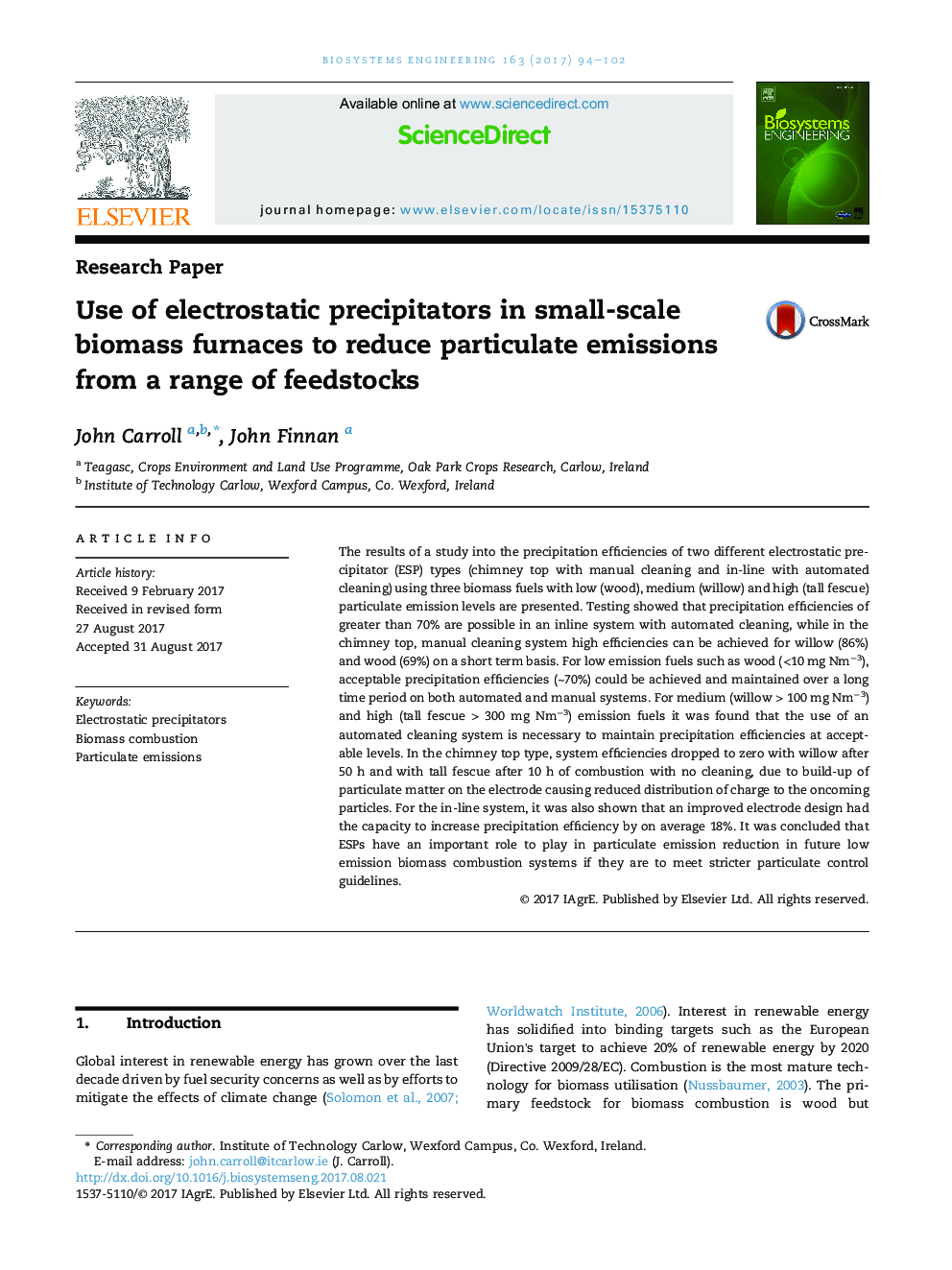| Article ID | Journal | Published Year | Pages | File Type |
|---|---|---|---|---|
| 5471835 | Biosystems Engineering | 2017 | 9 Pages |
Abstract
The results of a study into the precipitation efficiencies of two different electrostatic precipitator (ESP) types (chimney top with manual cleaning and in-line with automated cleaning) using three biomass fuels with low (wood), medium (willow) and high (tall fescue) particulate emission levels are presented. Testing showed that precipitation efficiencies of greater than 70% are possible in an inline system with automated cleaning, while in the chimney top, manual cleaning system high efficiencies can be achieved for willow (86%) and wood (69%) on a short term basis. For low emission fuels such as wood (<10 mg Nmâ3), acceptable precipitation efficiencies (â¼70%) could be achieved and maintained over a long time period on both automated and manual systems. For medium (willow > 100 mg Nmâ3) and high (tall fescue > 300 mg Nmâ3) emission fuels it was found that the use of an automated cleaning system is necessary to maintain precipitation efficiencies at acceptable levels. In the chimney top type, system efficiencies dropped to zero with willow after 50 h and with tall fescue after 10 h of combustion with no cleaning, due to build-up of particulate matter on the electrode causing reduced distribution of charge to the oncoming particles. For the in-line system, it was also shown that an improved electrode design had the capacity to increase precipitation efficiency by on average 18%. It was concluded that ESPs have an important role to play in particulate emission reduction in future low emission biomass combustion systems if they are to meet stricter particulate control guidelines.
Related Topics
Physical Sciences and Engineering
Engineering
Control and Systems Engineering
Authors
John Carroll, John Finnan,
